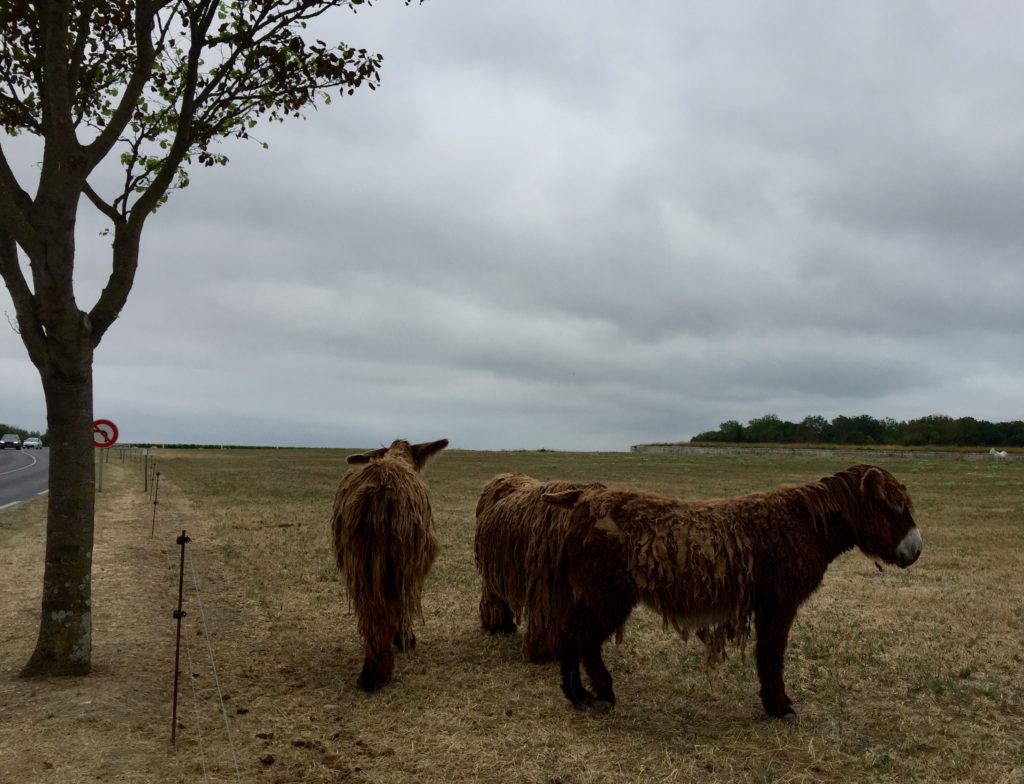
We have been based in the country since January 1, 2016, aside from time spent traveling — and not all that much of it has been inside the country we currently call home.
France is a big country, at 248,572 square miles, second only to Texas in area among states in the United States’s Lower 48, and well ahead of California (163,694 square miles).
But much of France is a blank canvas to me, including nearly all the chill and wet area north and northwest of Paris, rugged Britanny and nearly all of the southwest, vast tracts of underpopulated areas from south of Nantes south to nearly the border with Spain.
With a chance to take a drive towards the Atlantic, and then up to the Ile de Re, in the Charent-Maritime … well, it seemed a good way to have a look at some of the expansive tracts of the largest country in Western Europe.
And what have we found, so far?
Lots of green, open, lovingly tended and gently rolling places, and many areas bordering major bodies of water (the Atlantic, the Mediterranean, mighty rivers or placid canals) or not far from one.
France is underpopulated, by European standards, with around 70 million citizens spread over what some prefer to think of as the French hexagonal.
On Day 1 of our dash southwest and then mostly north, we saw miles of vines, just as many fields of grain or sunflowers, great numbers of beasts on the hoof and scads of the small towns which are the lifeblood of a country too often thought to exist of Paris and nothing much else.
Any trip around France, whether by car or railway, will soon meet up with the reality of its rugged interior, known as the Massif Central. It covers nearly 20 percent of France, in the lower-middle half of the country, an area that is lightly touched by humans, even in the 21st century.
The Massif is crossed, even now, by only a handful of roads, most of them small and winding — aside from one north-south and one east-west autoroute, as the French term their “interstate” highways.
Rather than try to dig more or blast additional bits of the Massif, the rest of France’s ground-transportation network works around the tall and rocky Massif, leading to 13 regions (loosely akin to U.S. states) that mostly form a wide belt girding the Massif.
Hugging the Massif from the south are the economically humble Occitanie, where we live, as well as sections of Nouvelle Aquitaine, a particularly verdant stretch that reaches from the border with Spain and north through to the Loire River.
Occitanie is best known for Toulouse, often best-known as the headquarters of aviation giant Airbus, which we have some knowledge of. Nouvelle Aquitaine has its capital of sorts in the city of Bordeaux — which gives its name to many of France’s best wines.
The sun was lowering when we angled north into Nouvelle Aquitaine, crossing the wide Garonne River and then into a another verdant stretch along the sea. The terroir here is more rolling or even flat, compared to the Occitanie region, which is often rocky and dry and windswept.
Much of Nouvelle Aquitaine is known for its miles and miles of beaches, most of them washed by the chilly Bay of Biscay, which takes its name from the Spanish province in Basque Country.
After covering stretches of road including the A75, A9, A61, we finally pulled off the A62 just short of La Rochelle, which carries on some of the characteristics of Nouvelle Aquitaine, which includes areas of steady cloud and gray days — which are not at all minded by sun-baked refugees from Occitanie.
We are now in an area invaded by tourists from the north, who want sun but perhaps not as much sun as they could find in the southeast of the country, in Montpellier or Marseille or Nice.
One of the most popular vacation spots in the summer is a long, green island known as Ile de Re, 33 square miles of cycling, jogging, hiking, camping, tippling tourists, most of them French, many from Paris, on an island connected to the coast at La Rochelle by a bridge nearly two miles long.
Ile de Re is a pleasure to leisurely crisscross, stopping to look at lighthouses and vineyards, oyster farms and salt marshes, and shaggy donkeys but also at new, bright housing on an island that somehow still seems spacy despite being home to 18,000 residents — and maybe twice that, in August.
Next: We plan to backtrack to the south and in the direction of Bordeaux and the world’s great red wines.

0 responses so far ↓
There are no comments yet...Kick things off by filling out the form below.
Leave a Comment